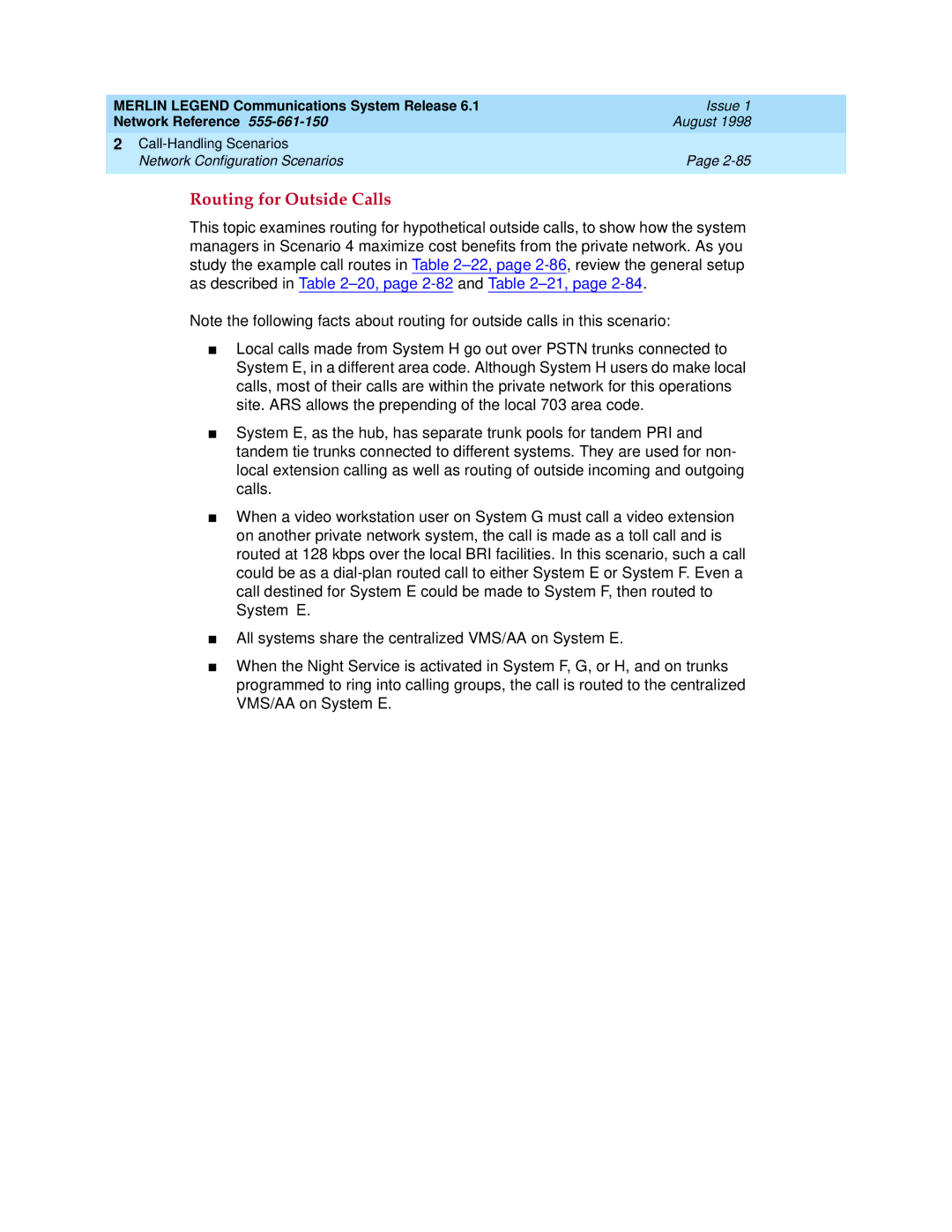MERLIN LEGEND Communications System Release 6.1 | Issue 1 |
Network Reference | August 1998 |
2 |
|
Network Configuration Scenarios | Page |
|
|
Routing for Outside Calls
This topic examines routing for hypothetical outside calls, to show how the system managers in Scenario 4 maximize cost benefits from the private network. As you study the example call routes in Table
Note the following facts about routing for outside calls in this scenario:
■Local calls made from System H go out over PSTN trunks connected to System E, in a different area code. Although System H users do make local calls, most of their calls are within the private network for this operations site. ARS allows the prepending of the local 703 area code.
■System E, as the hub, has separate trunk pools for tandem PRI and tandem tie trunks connected to different systems. They are used for non- local extension calling as well as routing of outside incoming and outgoing calls.
■When a video workstation user on System G must call a video extension on another private network system, the call is made as a toll call and is routed at 128 kbps over the local BRI facilities. In this scenario, such a call could be as a
■All systems share the centralized VMS/AA on System E.
■When the Night Service is activated in System F, G, or H, and on trunks programmed to ring into calling groups, the call is routed to the centralized VMS/AA on System E.
